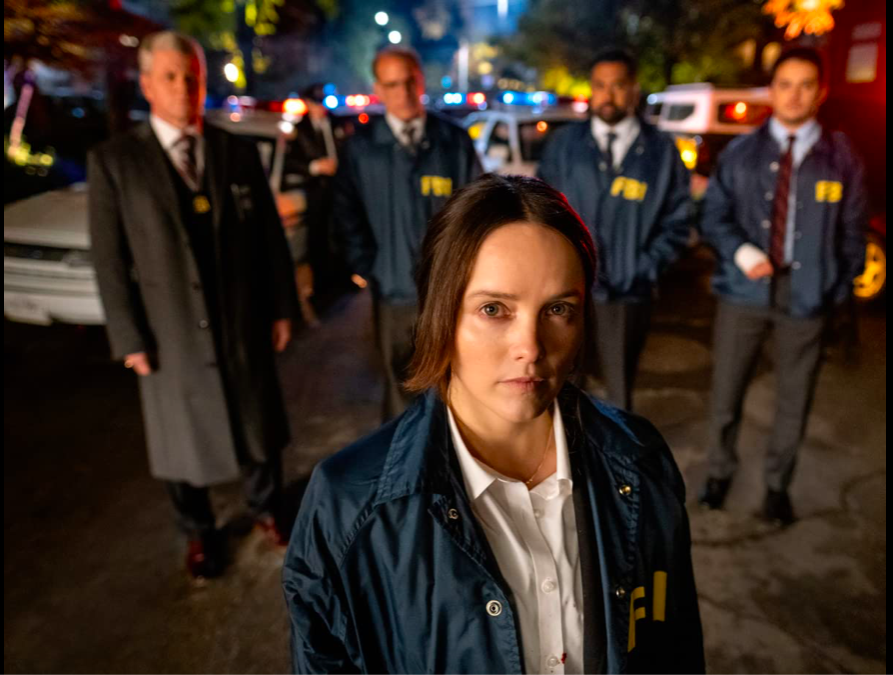REVIEW: ‘Clarice’ is an ordinary spinoff of an extraordinary masterpiece

Thirty years ago, Director Jonathan Demme’s “Silence of the Lambs” shocked audiences everywhere when it introduced the horror-filled world of Clarice Starling and Hannibal Lecter. “Silence” is now well known for its creepily fascinating cannibal, Lecter, and its alluring and tough junior FBI agent, Starling.
Although the movie focuses on Lecter and the horrifying mind of America’s most infamous psychiatrist, it introduces a traumatic and unexplored backstory for Clarice. Notably, Clarice tearfully tells the story of the nightmare-inducing screams of lamb being slaughtered on her Uncle’s farm that still haunt her years later.
This interesting part of her backstory is never fully fleshed out in “Silence” and, for decades, studios have ignored Clarice and focused on churning out sequel after sequel on Hannibal the Cannibal. But, for the first time, producers are exploring a different character.
“Clarice,” CBS’s newest television show, is the first instance of a network venturing away from Hannibal’s tantalizing storyline and instead focusing all its attention on the intriguing Clarice Starling.
Disappointingly, the show fails to live up to the high bar set by its predecessor, but, despite a messy premise, it’s executed well.
“Clarice” presents itself as an emotional spin on the movie in the format of a dark crime drama. The show reintroduces Starling inside her therapist’s office where he proclaims that she is an agent who “needs to be out of rotation until she can heal from PTSD of the most egregious kind.” (4:30)
“Clarice” starts off promising, but it soon becomes apparent that the plotline (at least in the first episode) is one big crime show cliché where the main character must push aside her internal demons in order to catch the bad guy.
By following the overused tropes of an average TV crime drama, “Clarice” stays too safe to pay accurate homage to the greatness of Demme’s 1991 film, which wasn’t afraid to take it to the next level and shock viewers.
“Clarice” by itself would be a solid run-of-the-mill production, but compared to its predecessor, it seems mediocre.
However, the show does have strong components. It does an incredible job at depicting how Clarice’s trauma manifests itself while working on crime scenes and navigating interpersonal relationships. She is scarred from having let a psychopath into her head, being hunted in a dark basement by a serial killer and tossed around as a patsy for the press for the past year.
Rebecca Breeds, the actress who plays Clarice, executes the character beautifully. Viewers watch Clarice suffer from intense flashbacks riddled with moths, screaming lambs and horrific images of Buffalo Bill’s lair. We feel her pain, and it is captivating. Her battle with post-traumatic stress disorder and its damaging psychological effects is arguably more interesting than her attempts to catch a serial killer.
Despite the show having tremendous potential for an alluring storyline, the showrunners ignore Clarice’s diminishing mental health and instead focus on forcing her back into the field to tackle criminals. The decision to push Clarice back into the field — and make her mental issues secondary — seems like a cheap attempt by the showrunners to deal with the fact they do not have the rights to use the name Hannibal Lecter.
The production did not get the rights to the Hannibal name and is only allowed to allude to his presence. MGM and the Dino De Laurentiis Company share the rights to Thomas Harris’ characters, the author of the books “Clarice” is based on, and only granted CBS the right to use all of the characters introduced in Harris’s 1988 novel “Silence of the Lambs.” However, Lecter was not introduced in this work but in the 1981 novel, “Red Dragon,” meaning CBS can hint at him but never outright mention his name.
Lecter was one of the main causes of Clarice’s PTSD, and because the show cannot mention his name, it cannot completely dive into her trauma either and would not be able to execute that storyline well if it tried. This results in a mediocre plot based on popular television clichés, ranging from the “back off, this is my case” trope to the “main character has a hunch that no one else believes in” trope, instead of an intensive look into Clarice’s PTSD and mental health.
Although the script and foundation of “Clarice” appear to be just like every other crime drama on television, the execution on and off camera is what gives this show a fighting chance.
Breeds gives a performance that would make Jodie Foster, the original actress for Clarice in the 1991 film, proud. The raw, subtle emotion that graces her face is beautiful and undeniable. Her performance is haunting and her star quality is evident from her first moments on screen.
The show is carried by Breeds’ remarkable emotional range, stellar music and cinematography. One of the strengths of “Silence of the Lambs” was its ability to make the audience feel pain or trepidation from a well-placed camera or the pacing of a song. Here, the haunting, consistent background music does more to invoke the audience’s emotions than the actual script. It tells a story that doesn’t need any dialogue. And, when combined with a handful of remarkable camera angles, a masterpiece is created. It’s a beautiful show, and a worthy follow-up to “Silence” in that aspect.
“Clarice” has many faults, but it would be a shame to count this show out. It may have faltered in its first episode but deserves time to find its footing.

